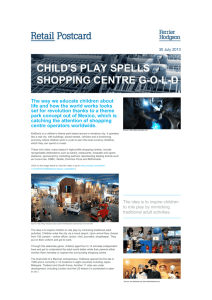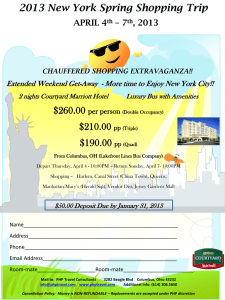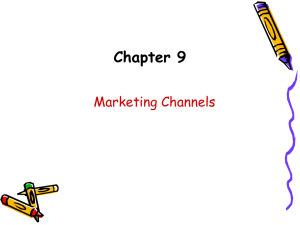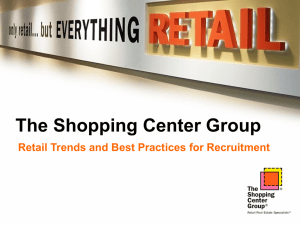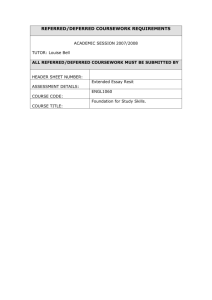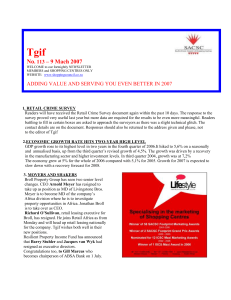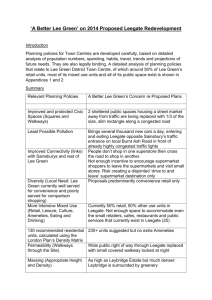Consumer Decisions - Study Is My Buddy 2014
advertisement
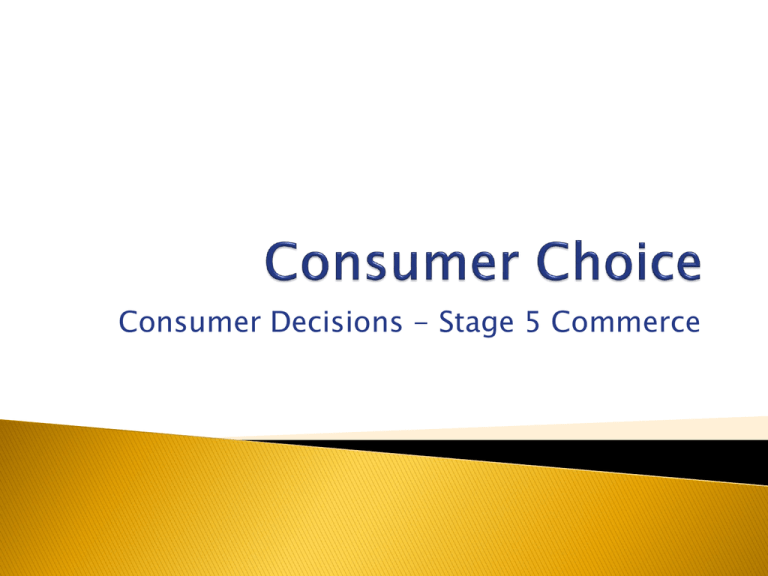
Consumer Decisions - Stage 5 Commerce comparison shopping ◦ types of goods and services ◦ different brands and products ◦ choosing what to buy choosing where to buy ◦ range of locations and sources ◦ types of retail outlets ◦ internet purchasing and mail order ◦ locally, interstate, globally key factors affecting consumer decisions ◦ finance, price, marketing, age, gender, convenience, service ◦ environmental considerations Consumers purchase two main types of goods – ◦ 1. Durable goods – goods that have a long lifespan and do not need to be replaced frequently. For example a washing machine, furniture and motor vehicles. ◦ 2. Non-durable goods – goods that are purchased frequently and have a short lifespan. They are less expensive and bought with cash or EFTPOS. For example food and pens Another way of naming or grouping goods is to look at the relationships between them. ◦ Complementary goods – a good that is generally consumed with another good. For example tomato sauce and meat pies. ◦ Substitutes – a good that can be purchased as an alternative to another good. For example butter instead of margarine. Intangible goods provided to consumers by individuals or firms. Some like education are transferable from one person to another. Some are consumed at the point of sale like watching a concert so are not transferable. Make a list of the services you consume on a weekly basis. Notable examples include Nike, Coke, Quik silver, Microsoft, Apple Brand names can become so powerful they replace the original or generic name for the product for example vacuuming being referred to as hoovering. Generic and own-label goods include ‘no frills’. They boost the reputation of supermarkets and reduce the power of manufacturing companies. They often cost less and are of comparable quality to the branded alternatives. Brand Is this good a need or a want ? Is this good durable or non-durable ? What is a substitute to this good ? Select 10 goods you would purchase during a typical week and then copy and complete the table as shown above. Is this a generic / own – label good ? See activity on www.studyismybuddy.com Year 9 Commerce Consumer Choices Impulse buying – where you purchase a good or service on the spur of the moment and later discover you cannot afford the product or do not really need it. Retail stores can be placed in a hierarchy based on the types of goods they provide and how far consumers need to travel to get to them. ◦ At the top are large regional shopping centres and stores selling expensive consumer durables (sporting equipment) ◦ Then come planned shopping centres like Westfield which provide one stop shopping and a car park. ◦ Independent retailers and corner stores have largely been replaced. Select a product sold in a range of locations and from different sources and report on comparisonshopping processes. Include a picture of the product. Asking the following questions enables you to avoid impulse buying. What exactly are my needs ? Can I afford this ? Have I compared prices ? What after-sales service is available with the product ? What are the features of the product and will it do all I want it to do ? ◦ How safe and reliable is the product ? ◦ ◦ ◦ ◦ ◦ Design an educational pamphlet to outline the steps consumers take to avoid impulse buying. Include pictures and illustrations to help get your message across. General (corner) stores – small retail outlets that focus on selling everyday convenience items like milk and bread. Supermarkets – (Coles) large self-service stores that sell a wide variety of food and other household products. Department stores – (David Jones) retail outlets divided into a number of smaller units or departments selling a wide rage of goods and services. Discount stores – (Big W) offer a range of goods through specific product departments which provide cut price promotions and value for money. Independent specialty stores – (The Bike Barn) usually owner operators that focus on selling a specific product. Category killers – (Toys ‘R’ Us) retail outlets often operating out of large warehouses that dominate the sale of one particular product type. Franchises – a type of retailing that involves selling the rights to use a business name, image or management system. Periodic markets – large numbers of sellers in an informal market setting open only on the weekend and providing bargain and bulk-orders to save money. Shopping strips – traditional shopping centres consisting of a range or retail outlets lining the main street of a town or suburb. Planned centres – (Macquarie Centre) retail outlets that are planned, operated and managed as a single unit. They contain a couple of large anchor stores and a wide range of speciality stores under one roof with easy car parking. Develop a mind map of the different types of retail outlets. Design a pamphlet or power point presentation informing consumers of the advantages and disadvantages of either direct marketing or internet shopping. Direct marketing is where goods are sold directly to a customer rather than through a retail outlet. Direct marketing includes mail order (sending customer offers, advertising or catalogues) and telemarketing (phone sales) and doorto-door sales. Anyone with a computer and internet access can purchase a range of goods from around the world and have them delivered direct from the warehouse or manufacturer to almost any location in the country. Select one online shopping site and answer the following questions: a) How easy is this site to use? b) What types of goods are available from this site? c) How are the goods delivered, how long does this take and what are the delivery charges? d) What payment options are available? e) How secure is the site? Present your findings in the form of a report. Guides for making a decision include: ◦ The price of the good or service ◦ The quality of the good or service ◦ The service provided including warranties and after-sales advice. ◦ Your ethical perspective – when we purchase imported goods there is a flow of money out of the country to pay for them. access www.choice.com.au and www.consumersonline.gov.au and investigate ethical consumerism. Consumers can choose whether to purchase locally manufactured or imported goods (goods produced overseas). Improvements in communications technology and road, rail and air transport make it easier for consumers to purchase products regionally or from interstate. In the mid-1990s Australian labelling was changed to make it easier for customers to identify products made in Australia ◦ To be labelled ‘Product of Australia’ it needs to be produced and processed within Australia ◦ To be labelled ‘Made in Australia” the product is manufactured in Australia but contains imported ingredients. Commercial Personal Can I obtain finance to help me make this purchase ? ◦ Funds come from your savings, a bank or financial institution. ◦ Some stores offer store credit cards and hire purchase agreements (funds lent to customer by the store). ◦ Your disposable income, the amount of money you have to spend on goods and services. Disposable income (net income) = gross income (total income) - tax What is my budget? Can I afford this good? ◦ Obtain a minimum of three quotes before buying an expensive good or service. ◦ Don’t be rushed into making purchases. ◦ Be aware of hidden costs like installation charges, service costs and postage. Potato chips are available in the following package weights and prices. Use the unit pricing method to work out which is the best value? a) 500g packet $2.50 b) 750g packet $3.60 c) 1kg box $5.30 The five P’s are used to alter the buying behaviour of consumers. ◦ ◦ ◦ ◦ ◦ Price, Position, Product, Promotion and Place Consumers wants change as they get older. Babies Secondary School Primary School Toddlers Pre schoolers Write down two wants relevant for each of the five age groups Boys and girls often purchase different types of products. Boys Girls Many Australians use convenient shopping options like online shopping and ebay. Using word art list words to show options Australians could use to purchase a computer. Consumers are demanding a more personalised shopping experience. Businesses have responded by offering a range of mobile domestic services including pet grooming and gardening services. These services are available seven days a week and travel to a customer’s home or workplace at a time the customer chooses. Using the internet find the name and contact details of a mobile pet grooming and gardening service. Consumers are considering the environmental impact of their purchases. Manufacturers and retailers are selling ‘environmentally friendly’ products manufactured from recycled materials. Using pictures from the internet create a collage of factors that influence consumer decisions.

